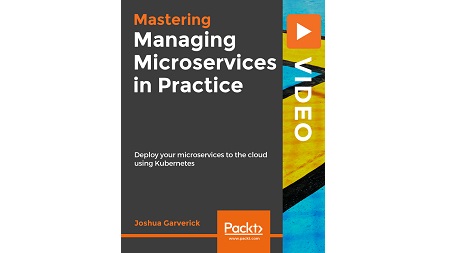
English | MP4 | AVC 1920×1080 | AAC 48KHz 2ch | 3h 26m | 711 MB
Get your Microservices into the cloud and communicating
Need your microservices running in the cloud without impacting your customers or harming your revenue? This course will lead you through the essentials of what a Kubernetes cluster is and how it can effectively manage your microservices.
You’ll learn about pods, deployments, and elastic capacity management, along with features such as auto-healing and how best to use them. Communication within a Kubernetes cluster is key; site reliability is equally as important, and many tools are available to support logging, monitoring, and alerting.
You’ll start by setting up, instantiating, and securing your kubernetes cluster. Then you’ll learn about network management, including Ingress, Istio, and how to control your traffic flow. You’ll learn about cloud-native as well as cloud-agnostic tooling for monitoring, alerting, and telemetry gathering. Finally, you’ll learn about monitoring tools, setting up alerts to ensure the stability of your deployment.
By the end of this course, you’ll be empowered to handle multiple microservices, and have the skills to ensure that your own microservices are fault-tolerant, resilient, and responsive.
Learn
- Gain an understanding of all of the building blocks of a Kubernetes Cluster
- Efficiently use the everyday tools of a Kubernetes Administrator
- Securing the Kubernetes cluster and communicating with your microservices from every angle
- Difference between CI and CD and why you need them
- Find out what CI/CD tools work well for you
- Keep your applications and tools live and ready
- Ensure that your deployed application is stable by placing monitoring tools and alert systems
Table of Contents
Introduction and Test Cluster Setup
1 The Course Overview
2 Kubernetes Architecture Fundamentals
3 Minikube versus Docker-Compose versus Docker Desktop
4 Installation of Minikube
5 Instantiation of a Kubernetes Cluster
6 Fundamentals of Cluster Management Tools
Use and Deploy
7 Familiarize Yourself with kubectl
8 Starting Small – Deploying a Pod
9 How to Talk to Your Pod
10 Creating a Deployment
11 Scaling Your Deployment with HPA
Securing Your Cluster
12 Overview of Kubernetes Role Based Access Control
13 Setting Up Common Permissions with Roles
14 Fine-Grained Security Using Explicit Permissions
15 Service Accounts
16 Authentication Alternatives
Managing Communication with Your Microservices
17 Ingress versus Service versus Service Mesh
18 The Ingress Controller and an Ingress Object
19 Working with Service Mesh and Istio
20 Monitoring Traffic Flow
Continuous Integration and Continuous Delivery
21 Breakdown of CI and CD for Containers
22 Continuous Integration Options
23 Continuous Delivery – Watching Your Build Deploy
24 Making Your Deployments Fault-Tolerant
25 Integrated Chaos Engineering
Operationalizing Your Cluster
26 Monitoring with Prometheus and Grafana
27 Alerts Using Prometheus and Azure Monitor
28 Liveness and Readiness Probes Revisited
29 Platform Patching and Upgrading
30 Business Continuity and Disaster Recovery
31 Course Summary
Resolve the captcha to access the links!